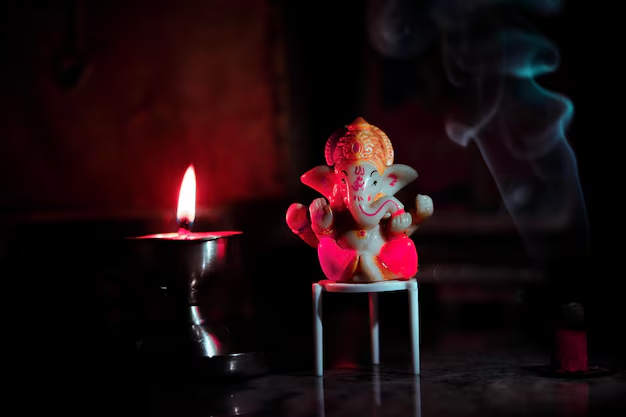Shiva, Ganesha and Parvati – The story of Ganesha’s Birth

Ganesha Chaturthi is among the widely marked Hindu holidays that celebrate the ganesha birth story – the remover of hurdles, the giver of wisdom and the giver of prosperity. The festival has a phenomenal cultural and spiritual relevance in India and the entire globe, which brings people together in bliss, worship and custom.
The Divine Birth of Lord Ganesha
The story of the birth of Ganesha has got depth of symbolism. Puranas state that Goddess Parvati dipped sandalwood paste and breathed life to Ganesha. She told him to watch the door and she took a bath.
When Lord Shiva came back and tried to enter, Ganesha (who did not know who he was) blocked him. Shiva was angry and cut off the head of the child. Shiva vowed to revive Ganesha after seeing the sorrow of Parvati. He advised his disciples to locate the head of the first living being that they encountered and it turned out to be an elephant. Putting the head of the elephant as the body of Ganesha, Shiva granted him to be the most important deity to be worshipped before any ritual.
So, the birth of the elephant-headed God was a promise of rebirth and knowledge.
Why Ganesha Chaturthi is Celebrated
The festival marks more than just Ganesha’s birth; it represents the victory of wisdom over ego and devotion over obstacles. Devotees worship Lord Ganesha for:
- Success and prosperity in life
- Removal of obstacles in personal and professional journeys
- Wisdom and clarity in decision-making
- Peace and protection for family and society
How Ganesha Chaturthi is Celebrated
In India, and more particularly in Maharashtra, Karnataka, Andhra Pradesh and Tamil Nadu, the festival is celebrated with pomp:
- Clay Idols of Ganesha are placed in the houses and pandals and decorated.
- Prayers and Aartis are performed every day, prayers and mantras of Vedas are chanted.
- Gifts such as modaks (the favorite sweets of Lord Ganesha) are cooked.
- Cultural Programs such as dance, drama and bhajans bring a mood of happiness.
Visarakan Ritual is the immersion of idols in water, and it is symbolically supposed that Ganesha is returning to Kailash taking all hardships with him.
Spiritual Significance of the Festival
The elephant head accredited to Ganesha is a symbol of wisdom, and his big ears mean that people listen to his worshippers. His fractured tusk is a sign of sacrifice toward a bigger goal, and his potbelly of acceptance and contentment.
Ganesha Chaturthi instructs us:
- In order to defeat setbacks with forbearance.
- To have a moderate, moderate balance of knowledge and faith .
- In order to be able to become a humble individual rather than a proud one.
Celebrating Ganesha Chaturthi with Utsav
In today’s busy lifestyle, not everyone can perform rituals in temples. This is where Utsav bridges tradition with modernity. Through Utsav, devotees can:
- Book Online Pooja conducted by expert Pandits
- Join Live-Streaming Rituals from anywhere in the world
- Receive Prasad at Home after completion of the puja
- Personalize Sankalp with name and gotra during rituals
This makes celebrating Ganesha Chaturthi easy, authentic, and spiritually fulfilling.
Conclusion
The festival of Ganesha Chaturthi is not merely a festival but a pilgrimage – it helps us remember humility and wisdom and godly grace. The birth of the elephant headed God has become a sign of hope, protection and new lives to all followers. At home, in a great pandal, or therewith on Utsav you can book puja online and get the blessings of Lord Ganesha , to help you through life’s challenges with his kindly smile.






